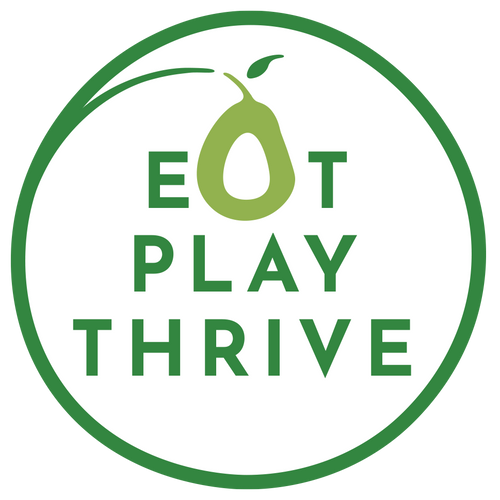
The shift to summer is exciting—but it can also be a little stressful. I love the slower pace it brings for my own kids: it gives them time to breathe, explore, and reset. And with camping trips, water play, and sunshine ahead, there’s so much to look forward to.
But let’s be real—summer also comes with new challenges. Filling weeks with camps or childcare, preparing more meals and snacks at home, and navigating looser routines (hello, screen time!) can all feel a little overwhelming.
As a working mom of two boys—and a pediatric dietitian—I constantly come back to one key principle: balance. Yes, kids thrive with structure, but summer’s flexibility has its own benefits. It gives our children a chance to grow, play, and experience food and family in new ways.
So how can we embrace the fun of summer while still keeping our kids nourished and ourselves sane? Here are 5 practical tips from a pediatric dietitian to support happy, healthy summer days.
1. Embrace Seasonal Simplicity
Let Summer Produce Lead the Way
Leaning into what’s fresh and in season is a great way to avoid food burnout, make meals more exciting, and give kids nutrient-packed options.
Seasonal fruits and vegetables are often at their nutritional peak—and taste way better, too. Think sweet local strawberries over apples in cold storage, or cucumbers from a nearby farm instead of flown-in papaya.
How to Eat Seasonally
- Visit your local farmers' market to see what’s fresh.
- Look for “local” signs in grocery stores.
- Sign up for a CSA produce box to get what’s growing nearby.
-
Use online tools that list what’s in season in your region.

Summer Produce Ideas for Kids
- Watermelon slices
- Corn on the cob or tossed into pasta salads
- Cucumber sticks or salad slices
- Berries (all the berries!)
- Peaches or nectarines—fresh, in yogurt, or in baked goods
-
Sugar snap peas for a crunchy snack
2. Create Flexible, Balanced Schedules
Feed Without the Clock
Yes, kids do well with routines—but summer gives us a chance to soften the schedule a bit.
Here’s how to keep some structure without feeling rigid:
- Anchor meals (breakfast, lunch, dinner) around the same general times.
- Allow flexibility with snacks, based on activities and hunger cues—not constant grazing.
- Start talking about hunger and fullness with your kids. This helps them tune into their own needs.
-
Expect fluctuations—kids may eat more or less depending on activity, weather, growth spurts, or sleep changes.
3. Snack Smarter: Hydrate, Satisfy, and Fill Them Up

In summer, kids burn through energy (and hydration!) faster. Smart snacking helps keep them fueled and content between meals.
Prioritize Hydration
Choose snacks that naturally include water:
- Cucumbers, watermelon, strawberries, celery, tomatoes
-
Smoothies or fruit popsicles (blend in veggies + ice!)
Don’t Forget Protein
Protein helps kids feel full and energized:
- Plant-based: edamame, hummus with veggies, bean dips
- Cool options: Greek yogurt, cottage cheese, cheese sticks
-
Shelf-stable: jerky, meat sticks, nuts, crunchy roasted beans
Add Fiber for Fullness
Fiber keeps them satisfied longer:
- Berries (strawberries, raspberries, blackberries)
- Carrots and broccoli with dip
-
Whole grains: popcorn, oat-based granola bars, almonds
4. Prioritize Hydration (Without the Fuss)
Why It Matters
Kids need more fluids in the summer, and they don’t always recognize thirst. Dehydration can sneak up quickly.
Signs of mild dehydration include:
- Dry lips or mouth
- Fewer wet diapers or bathroom trips
- Dark yellow urine
- Irritability or tiredness
- Cool, dry skin
-
Headaches or dizziness
Make Water Fun
I know water can be a hard sell, but sometimes if we make it fun, we get more buy-in.
- Use silly straws
- Freeze fruit or juice in fun-shaped ice cubes
-
Try fruit-infused water or chilled herbal teas
Hydrating Foods to Include
As mentioned earlier, prioritizing hydrating foods is a good plan for snacks, because it helps kids get in the extra hydration they need. And if you are struggling to get your kids to drink fluids, you can lean more into the hydrating foods like cucumbers, melons, strawberries, tomatoes, oranges, lettuce, celery.
Other Drinks That Count
- Milk is hydrating and nutritious
-
Juice or sports drinks are okay in moderation (e.g., after heavy outdoor activity), but avoid making them the primary fluid source

5. Keep Mealtimes Low-Pressure and Playful
With less rush and more meals together, summer is a chance to reconnect over food. Use this time to build positive mealtime experiences.
Tips for Low-Pressure Summer Meals
- Switch it up: serve meals family-style or try snack-plate dinners
- Dine outdoors: picnic blanket or patio dining changes the mood
- Make it an adventure: eat in a fort, tent, or at the beach
- Introduce new foods without pressure to eat them
-
Explore familiar foods in new shapes, textures, or temperatures (think pasta salad vs. warm pasta)
Conclusion: A Nourishing Summer Is a Flexible One
Feeding your kids this summer doesn’t need to be perfect—it just needs to be supportive, simple, and centered on connection.
By leaning into what’s seasonal, staying flexible with structure, focusing on hydration and smart snacks, and keeping mealtimes light and fun, you’re giving your kids the ingredients they need to thrive.
So go ahead—take the picnic outside, slice up that juicy watermelon, and give yourself permission to enjoy the season. Nourishment is just as much about the joy as it is the nutrients.
